UDO takes us inside the upcoming binaural Super 6
The talk of the town right now among synthesists of all stripes is undoubtedly the Super 6, recently unveiled at this year’s Superbooth. While UDO has taken its design cues from classic models of yesteryear, the binaural sound and ‘superwave’ architecture of the company’s inaugural polysynth has its feet firmly in 2019.
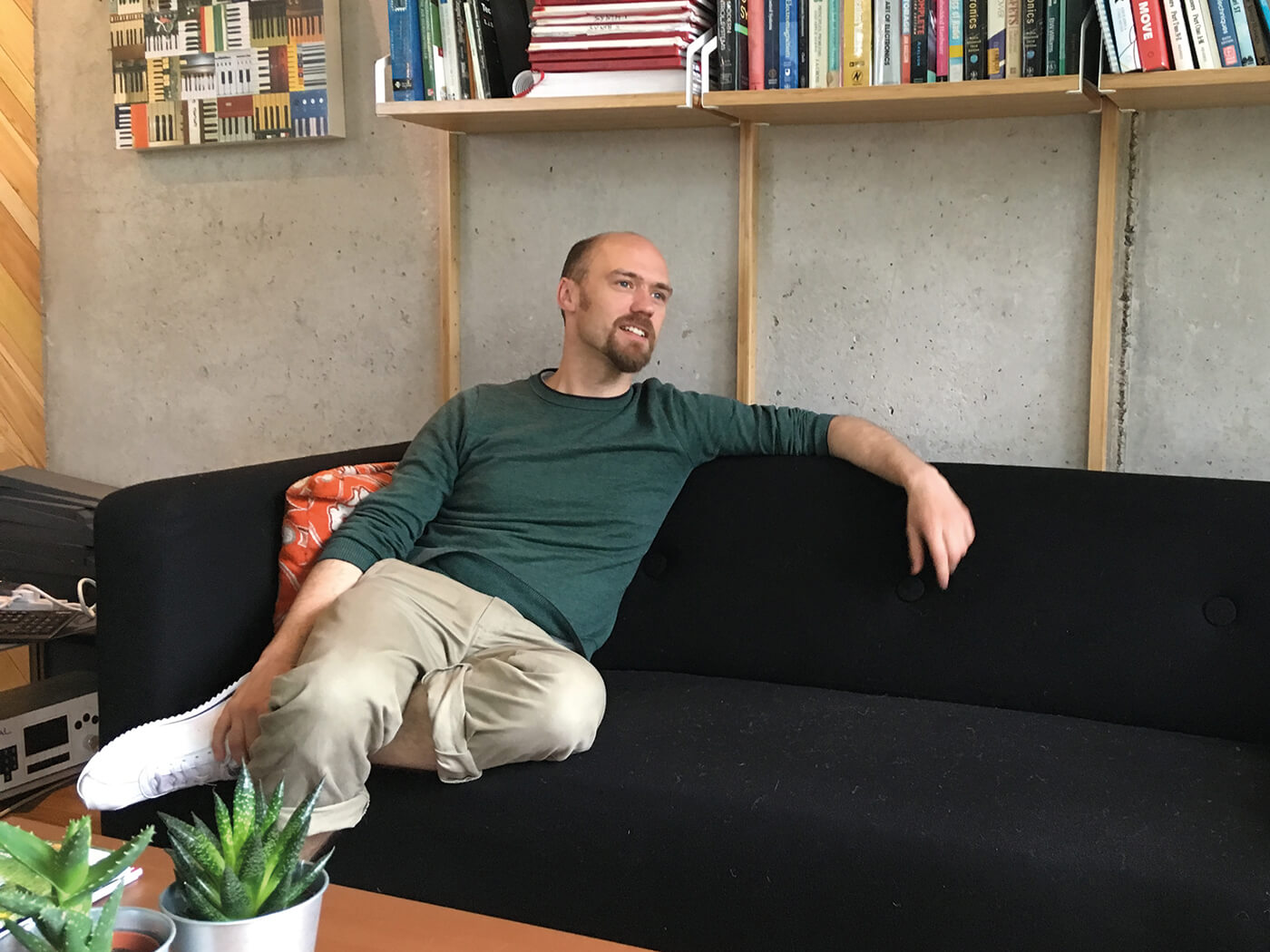
George Hearn’s career in electronics manufacture led him to co-found UDO and bring the Super 6 to life. Photography by John Thackray
There was a palpable surge of excitement upon the initial revealing of the Super 6 at this year’s synth extravaganza (and annual highlight) Superbooth. Firstly, there was the design – with the tactility of the pots, switches and faders harking back to the glory days of Roland, Korg and Yamaha. Once we were drawn in by the aesthetic, though, our interest was then taken to a whole new level by the depth of the thick, binaural sound that the Super 6 is capable of generating. We were, in a word, amazed. Particularly considering that UDO is a first-time manufacturer.
However, George Hearn, the creator of the Super 6, has had a long and prolific history in the world of synth design. He invited us to UDO’s Bristol-based headquarters for an inside look at the building process of the machine that has got the industry salivating.
When did the idea first strike you to start the company?
I’ve been a hobbyist in electronics since I was a teenager. I’ve been building synthesizers since I was 18. Ever since then, I’ve been kind of building up to starting UDO. So it’s been a long time in the making. I’d gone on to have a career in electronics manufacturing, and worked on the design of quite a few synths – I was behind the 008 with Modal Electronics, but I’d also been making non-musical things for different industries and I wanted to ultimately just join together the things that I’m passionate about. I thought, ‘It’s now or never.’
It’s a good time to do it – hardware synthesizers are back and there’s a definite resurgence. We did actually look around the market, however and realised that if you strip it down to ‘instruments’ – that is polyphonic, keyboard instruments – the consumer doesn’t have masses of choice. There was nothing out there that really captured that magical allure those vintage polysynths had.
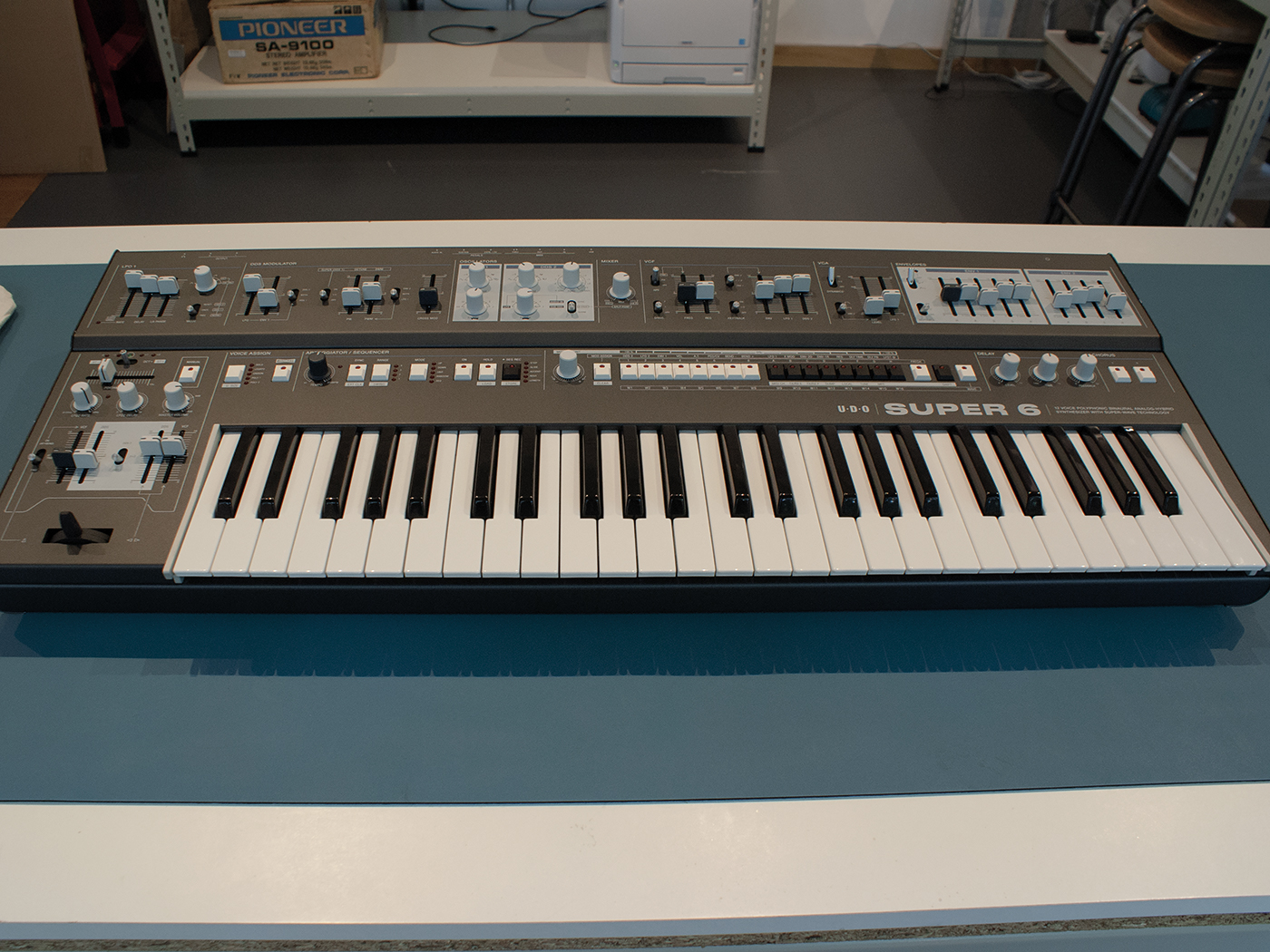
Software these days is really great and very flexible and convenient, so we had to ask ourselves: “What’s the point in making hardware?” Part of the point, I would say, is that you have that direct interface and a complete self-contained instrument.
Do you think it aids creativity, having the physicality of a hardware synth in front of you?
I think it depends on your approach, but if you have a good instrument in front of you and you play it for a while and get a few song ideas, then you also get a feel for the performance and feel of it. I think of the Super 6 as a ‘performance synthesizer’. That doesn’t mean you have to take it on stage, necessarily, but even if you’re just standing there with headphones on, you’re performing what you’re playing. I wanted to create something that allowed you to get your ideas quickly. You’ve got that immediate feedback between player and instrument. It’s also really fun and built solidly. Which are timeless qualities that you should expect from all musical instruments.
From small beginnings…
How many people work here at UDO?
There’s four of us at the moment in the office, but there’s also design support from Axel Hartmann (Super 6’s designer) and his team. We’ve also got marketing and lots of little teams elsewhere.
So going back to your experience designing the Modal 008, did that project influence your design of the Super 6?
I think quite a lot of how the voice architecture is arranged is quite similar. You’ve got a couple of oscillators and a couple of envelopes. The analogue parts of the 008 and the Super 6 reflect each other, though there’s nothing internally that’s exactly the same; the filters are different, as are the amplifiers and oscillators. But the components are arranged in a similar manner.
The 008 is a very flexible and deep instrument, which is very focused on tight and detailed programming. We wanted to make something that was more immediate and more fun. You’ll notice the distinct lack of screen on the Super 6, which was a deliberate exclusion. That deliberate constraint made us think really carefully about getting depth with simplicity. Those concepts shouldn’t be at odds with each other.
There’s a lot of interest in Super 6’s binaural sonic capabilities, how is this created internally and was that always planned as one of the USPs of the synth?
It was yes, we wanted to give our synth a bit of a sonic edge. We believed that having spatial sound generated by a synth from its core engine was going to be a lot more desirable than a conventional mono signal path. It’s not the same as just stacking two voices left and right, as what we do is treat the two voices as true left/right channels.
When I was producing music and gigging, we’d use a lot of orchestral and acoustic instruments alongside synths, it was always difficult to place the synths in a mix nicely so it could sit among the other instruments properly. We thought that the binaural approach would enable artists to decouple the sound in space. So it doesn’t really ‘exist’ in a clear position. It’s everywhere and nowhere. That being said, it’s not really a subtle effect. It’s quite noticeable.
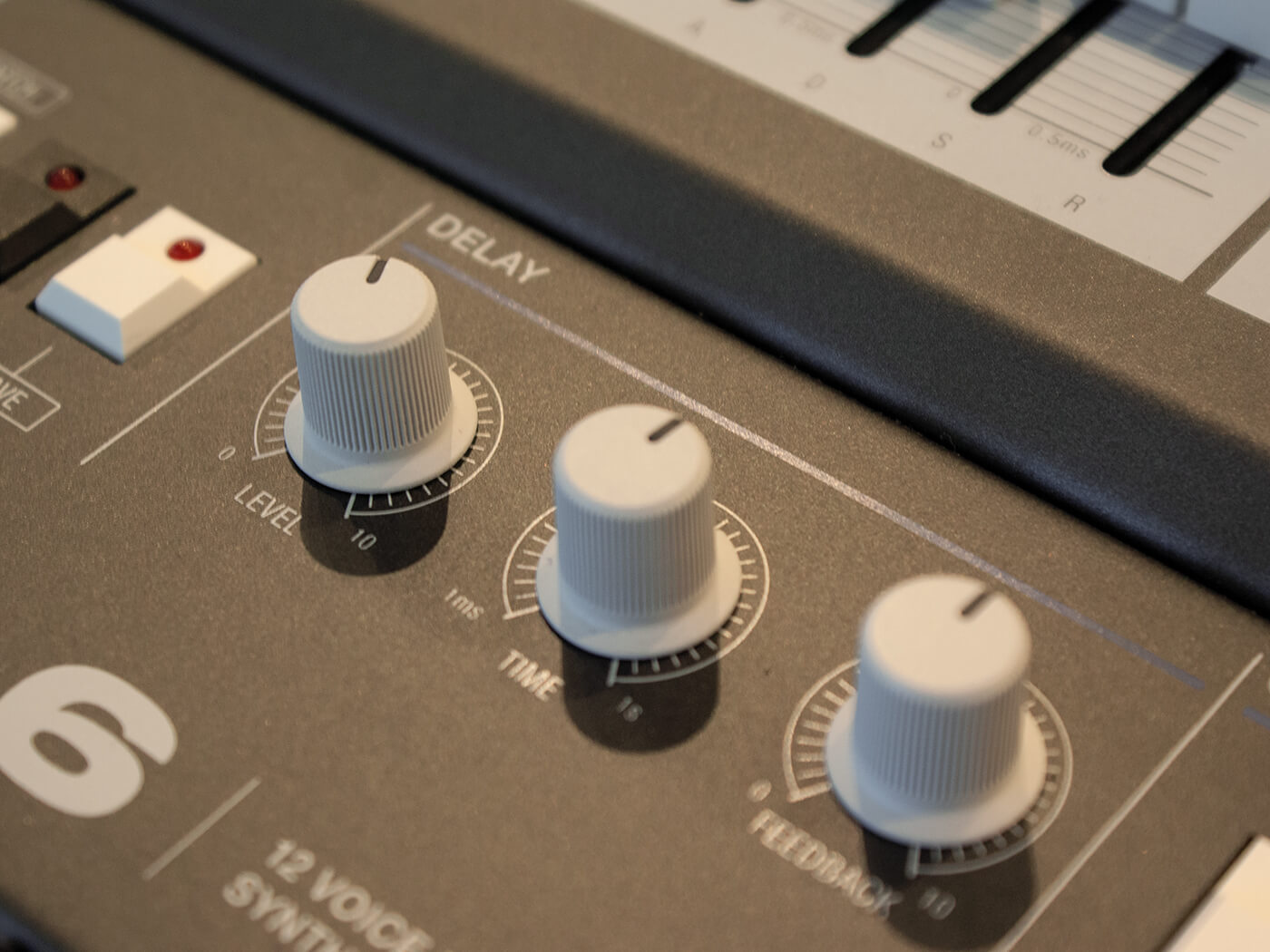
Internally speaking, once we’re in binaural mode, we couple the oscillators so that we don’t lose bass, we don’t lose punch and we don’t get phasing. We basically take the sister oscillators and detune and de-phase them and then that goes through your two filters and two amplifiers – your true stereo path. Then we basically apply a phasing control to the left/right channels. So your modulators and your LFOs can basically be titled to advance and retard the phase of each channel. It might sound quite complicated, but in application, it’s quite simple.
What gives it the width is the special oscillator section, with this you can get some really nice, lush pads. When you dial back the detuning and phasing, you’re left with this prominent central oscillator. But the perception of spread remains.
So when we say that the Super 6 has six ‘super voices’, we mean that each voice has two oscillators, two filters and two centre modulators. You can decouple those pairs and you’re left with 12 regular, centre-panned voices.
Is there anything out there that’s doing a similar thing in the synth world right now?
Well, there are definitely instruments that allow you to do the basic panning and voice stacking, but I think where we’re unique is that we’re designing it from the sound source, from the oscillators deliberately to be a spatial instrument. It’s not an afterthought, it’s right from the start. What’s very unique is how we can control the left/right phasing of the LFOs and the modulators, to give you modulations over time that move independently of both channels. To provide it as a simple, front-panel control is also quite unique!
The excitement curve
At what point in the process did you get Axel Hartmann involved with the design?
We got Axel involved around September 2018. We needed someone to do our mechanical design, someone who could really make the Super 6 look distinctive. We had a well-developed concept before we approached Axel. We approached him with a big brief that included pictures of things we liked and not just synthesizers, but guitars and artwork, too. We wanted to express a certain feeling.
Axel turned that into a set of concepts which we went through and basically chose the concept as it is from his ideas. We had a designed front-panel already, and we certainly wanted to hark back to the synths of yesteryear.
What do you think of the current trend of cloning and emulating in the world of synths?
There’s a lot of that going on and absolutely, there’s a place for that. But there’s also a lot of modernity for modernity’s sake going on in my opinion. I think that there were definitely things that classic synth designs got right. They had simple interfaces. I think lots of people miss that point that it’s not just what they sound like, it’s the feel as well.
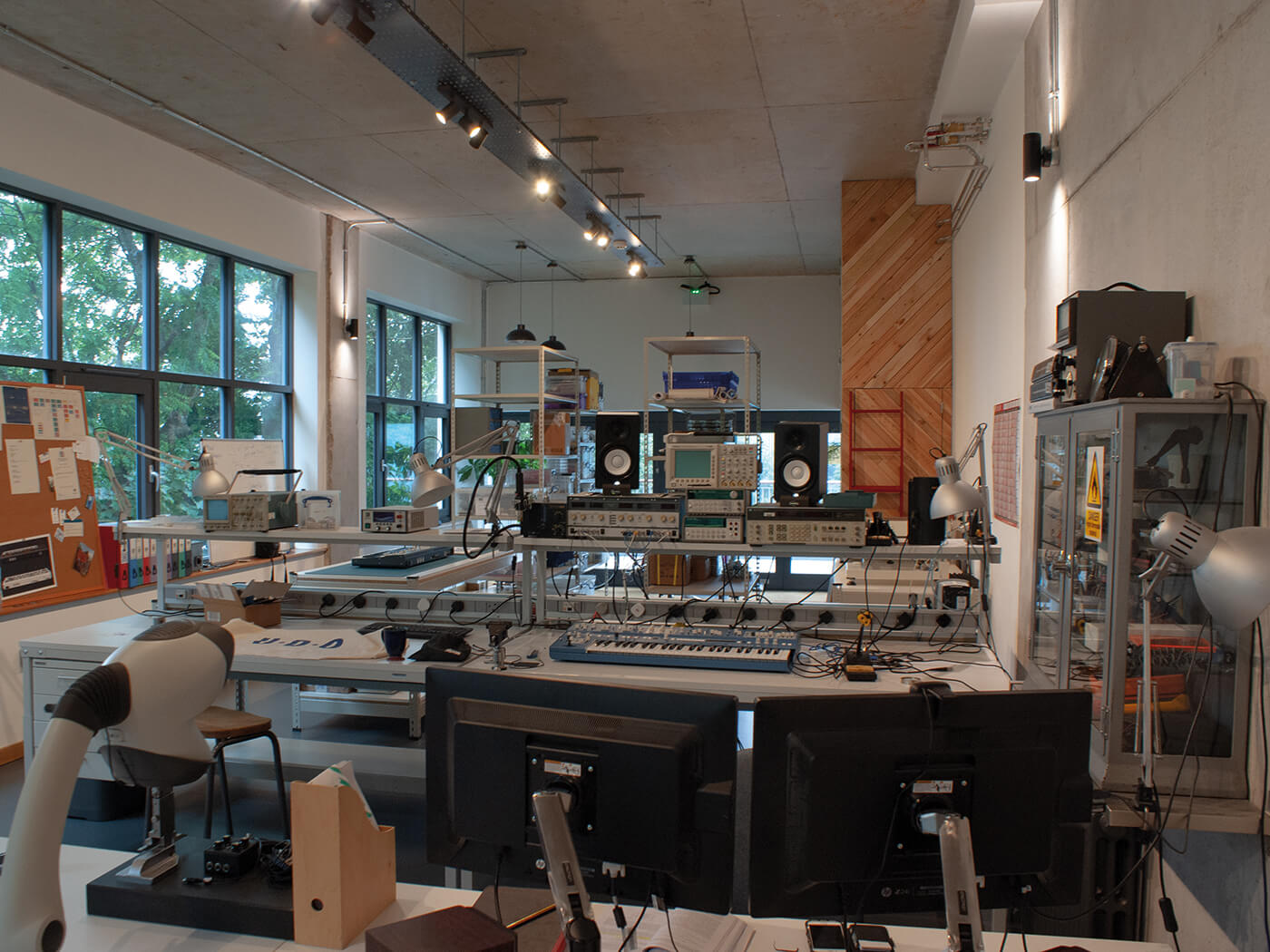
The big, clunky controls are a feature of vintage instruments that have been neglected. You can’t get that same feeling from a physically small control element. I think it’s good to look back and use the things that were done well, taking them and applying them to the modern day. We are fans of synthesizers, so I think we’ve always had an idea of how a quality synth should look. So anyone who knows that type of synth should be able to look at the Super 6 and think, ‘Oh, I know what that is’ without having to waste time with a long learning curve. More of an excitement curve.
So what are the benefits of using FPGA technology?
One of the key benefits of using it is the parallel processing, which enables you to make all your systems get very high sample rates. It allows you to make oscillators, modulators and LFOs that can sample into the multi-MHz region. So any problems with aliasing disappear. Effectively, the FPGA is like a hardware digital circuit rather than a piece of software. It behaves more predictably and stably. The parallel processing allows you to basically do things at speeds and rates that you just can’t do with the fastest DSPs. We use a combination of a computer to do the housekeeping and then the FPGA to generate modulators and do all the real-time stuff. It sits very nicely with the analogue gear.
Super 6 has a lot of features, but also a lot of similarities with classic synths. What do you think makes Super 6 different to them?
Let’s say an obvious comparison with the Super 6 would be a Jupiter-6. But comparatively, we have twice as many voices, we have velocity, aftertouch, MPE support, binaural modes, tuning stability and the immense improvement in reliability, combined with a relative reduction in cost. I think we’ve got the sound as well; we’re using classic SSM polysynth filters from the same era. There’s so many advantages to it.
So many of these feature advantages exist in the software sphere, but it wasn’t coupled with the same lovely ease of use and high-quality control elements. I’d say arguably, our envelopes stack up better, too. We’ve got to the point where we’re not compromising on the things that made the classic synths great and we’re adding so much more.
Did you have any particular ‘type’ of player in mind, for example, a soundtrack composer, a live musician or a sound-designing producer, when you designed Super 6?
I would really like this synth to be used as a usable workhorse in the studio. I don’t want it to be restricted to electronic music and would love for indie bands, for example, to use it. It’d be brilliant to see it used in different genres. I’d love to hear it being used in modern jazz! I’m hoping that the simple, approachable interface would allow it to appeal more to people who are put off by the techy aspect of computer-based music. You see a lot of Nords in live setups, and we’d love the Super 6 to be used in the same way.
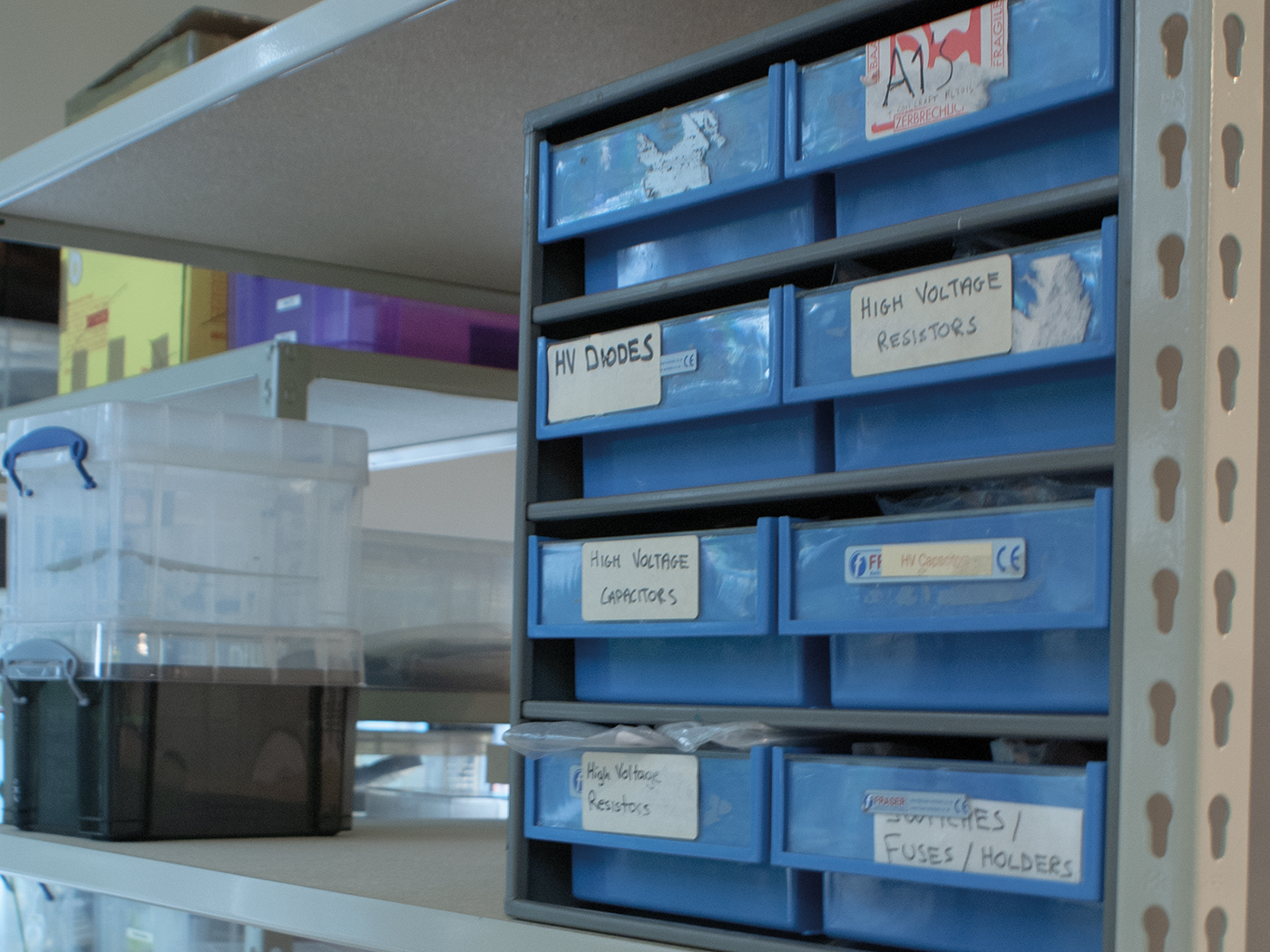
Of course, that being said, the Super 6 does lend itself to sound design, game music and soundtracks. I’d like to see live musicians and instrumentalists play it though first and foremost. Getting people out of the studio doing something interesting and new with it. If it’s just owned by people like me who just want to play the synth for their own amusement, then that’s also completely fine.
We’re always looking for ‘reasons’ to do things as creatives, but actually – creativity is an end unto itself. If you’re just enjoying playing the instrument, then that’s a perfectly valid use of the Super 6.
Rebellion against modernity
You launched at Superbooth. Were you surprised by the extremely positive reaction to Super 6?
We were really surprised. We knew it would have an appeal, because it’s a very classic-looking thing. This kind of synth package with these kinds of controls and this unique internal spec is always going to have an appeal. I think we were really nicely surprised by the positivity. The product wasn’t completely ready at Superbooth, but it gave us a lot of momentum.
We’re really grateful to everyone who came and checked us out, interviewed us and videoed us at the show. We’re really happy for that reaction, we really weren’t expecting it to get that much interest. But now we actually have to deliver!
How do you think the synth-world has changed in the last decade and what do you think about the renewed emphasis on hardware synths yet again?
I think it’s like a pendulum that recoiled quite a lot. I think there was a long period where analogue particularly was seen as an old technology. I think there’s been a general rebellion against modernity. Not just in music, but in clothing, in architecture and all sorts of things. There was an endless rush and race to throw out the old and embrace the new in so many different aspects of culture – and it was done with a bit of an arrogant disregard of the past. I think that the pendulum has recoiled and I think what’s going on in the music-technology sphere is a microcosm of this.
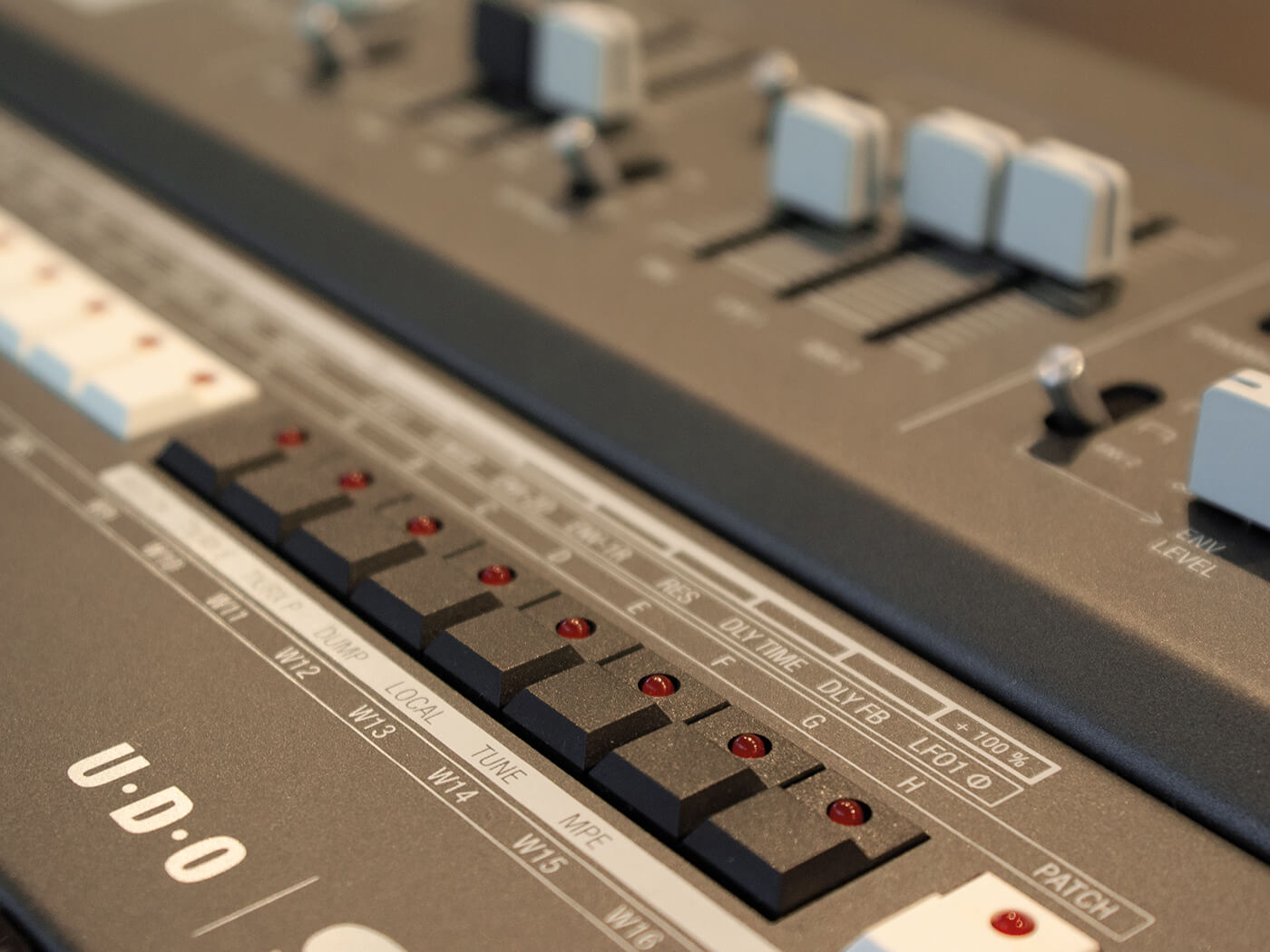
There’s been a flourish of hardware as people are realising that they’re spending all their time in front of screens; they’re working in front of them every day and then when it comes to having some fun and creative time, they’re having to look at a screen, too. It stands to reason that the idea of something hardware and physical that you can own is gaining popularity again.
What’s really exciting now is approaches like the one we’ve made with Super 6, looking at what’s exciting now and forging something new with the best of the past and the present. Hybrid technology is where it’s at.
I think that we’ve got to start making things to last and that goes beyond the music world, too. As a whole society, we’ve got a problem with our consumption of goods and energy. There are great guitars that were made in the 60s and 70s that are still great today. There are great houses made 200 years ago that are still great today. Having something to own and keep for a long time, made of good-quality material. Something that’s intrinsically repairable is something to aim for.
In synth-terms, people still love a good filter sweep and a punchy analogue bass now just like they did in 1970. I don’t think that’ll ever change, even in 2040.
Super family
Beyond the Super 6, does UDO have any plans to possibly create a software version, or more hardware synths?
Our core idea is to make powerful and accessible instruments, so our key focus is on instruments that are going to be powerful in terms of sound, but that are accessible and easy and fun. Exactly where we go with that is still being discussed. I think the Super 6’s lineage will continue, into possibly a range, a ‘super family’ with an emphasis on playability and fun. We’ll stay in the hardware world for the time being, but there may be software accompaniments to those products, to make a support ecosystem.
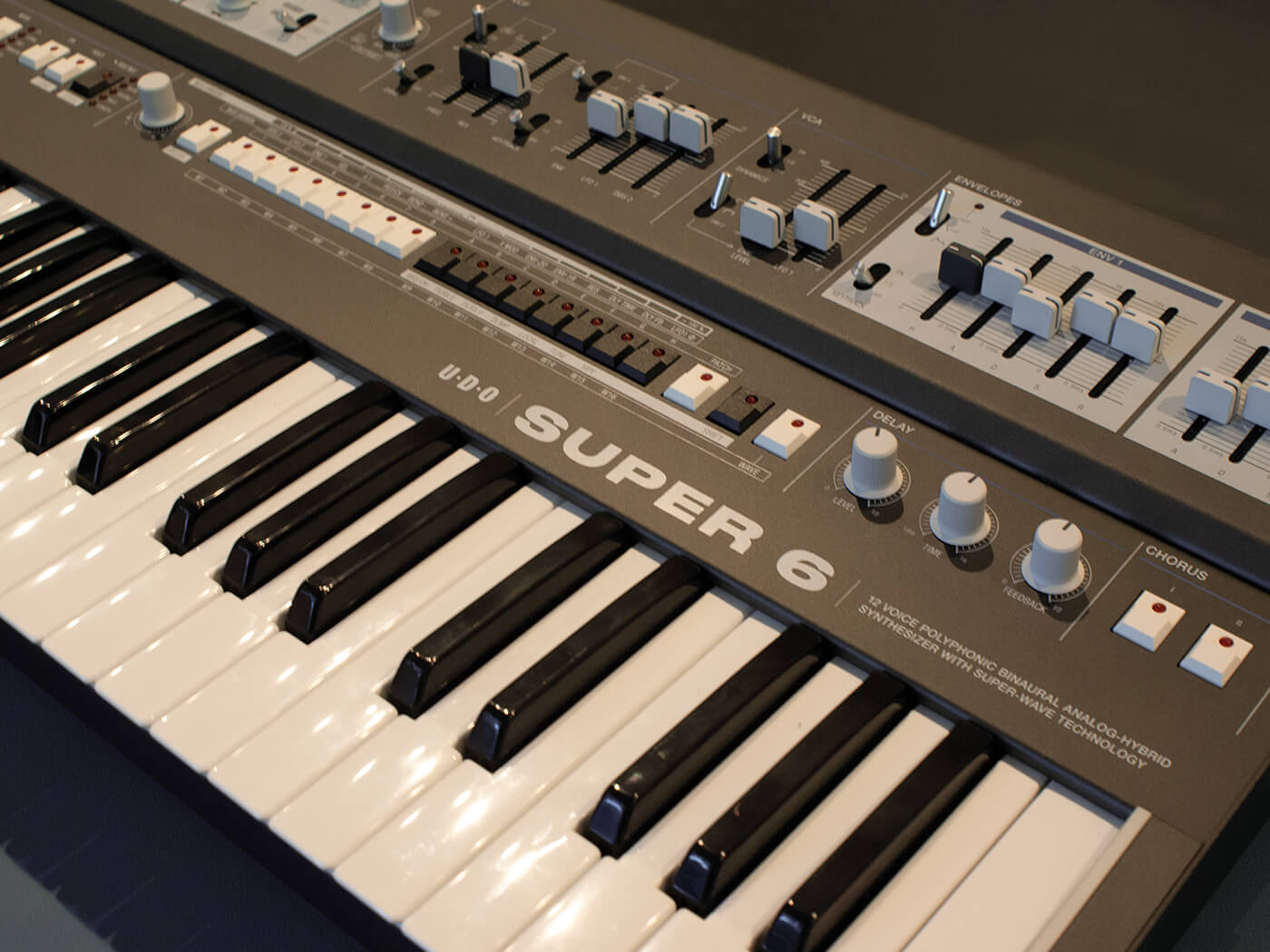
With the Super 6, we want to work on the integration side of it, to make editors and librarians for the computer. There may be some applications that allow you to explore different tunings and get into the deeper programming. It’s got an architecture that’s truly multi-timbral inside and every single parameter can be modulated by every single source all simultaneously and all by different amounts, which opens up quite a lot of scope. So we want to follow up with some kind of computer-based approach that allows this level of control.
What advice would you give to anyone who wanted to start designing and building synths?
You can’t rush these things. For me, getting to build the Super 6 took nearly two decades and without those two decades, what we would have missed would be the attention-to-detail that’s needed. I would say that the biggest joy comes from the designing, prototyping and building. Making something as a commercial instrument is a whole new area of discipline. We have to make a reliable product.
Something that I’ve come across time and time again in my former career in electronics manufacture is that once the bosses see a prototype, they think it’s nearly ready for launch. But you need to spend so much time fine-tuning, checking and guaranteeing that you’ve made what you set out to make. When it’s ready, it’s ready. Bigger brands wouldn’t show off their prototype at a trade show like we did. But do it, enjoy it – and there’s so many tools, books and videos to aid you. There’s never been a better time than now to design your own synth.
The Super 6 will launch this autumn with a retail price of £2,300. See UDO’s website for more info.
For more interviews, check here.